#agnathan fish
Text
Welcome back to the Paleo Party! This guest is Astraspis!
I love a lil dude who's entire existence is
:00000000000000000000
#video#my art#misc#paleontology#paleoart#fish#agnathan fish#jawless fish#ordovician#astraspis#paleo party
8 notes
·
View notes
Text
Wet Beast Wednesday: lampreys
Welcome to the first Wet Beast Wednesday covering an agnathan. What is that, you may ask? Why it means jawless fish. But they aren't really fish even though they live underwater and have gills. Taxonomy strikes again. Anyway, agnathans are more closely related to each other than to any bony or cartilaginous fish and they may represent an early stage in the evolution of vertebrates. There are only two living groups of agnathans: the hagfish (which I'll get to sometime) and the lampreys.

(Image: a pair of lampreys, one resting on rocky sediment and one swimming. They are long, green, slender fish-like animals with only dorsal and tail fins, several holes on the sides of the heads, large eyes, and no visible jaws. End ID)
Lampreys are sometimes mistakenly called eels due to their long and slender bodies. All 38 known species are elongated, scaleless animals with a funnel-shaped, jawless mouth called the buccal tunnel or buccal cavity. They do not have paired fins, only two dorsal fins and a tail fin. The head has one nostril on the top and seven pores on each side that allow water flowing over the gills to exit the body, similar to the gill slits of sharks. Adult lampreys have well-developed eyes while the larvae have weak eyes covered with skin. In addition, they have two simple parietal eyes, making lampreys the only four-eyes vertebrates. The mouth acts like a suction cup and is used to suction onto rocks or other animals. Inside the mouth is a rasping tongue that is used to scrape at food. You may think that all lampreys are parasites that feed on blood. This isn't the case, only 18 species are predatory and some of those are thought to be exclusively scavengers. The rest of the species either feed on algae by scraping it from rocks or never eat as adults, subsisting entirely on energy stores gained as a larva. The last common ancestor of all living lampreys (which is estimated to have either lived during the Jurassic or Cretaceous periods) is believed to have fed on blood as an adult. Lampreys are believed to be part of a sister group to all jawed vertebrates and are considered the most basal (closest to the ancestral form) of all vertebrates. They have cartilaginous skeletons and primitive, cartilaginous structures called arcualia instead of vertebrae. Lampreys are some of the most efficient swimmers and swim using a different method to other fish. Instead of using their fins to push themselves forward, lampreys use their fins to generate low-pressure zones in the water around their bodies to pull themselves forward. The pressure equalizing is what does most of the work of moving the lamprey, allowing them to move while expending little energy. In shallow water, the lampreys can use their suctioning abilities to crawl forward and are able to crawl over obstacles like rocks or ramps. Most lampreys are exclusively freshwater dwellers, but 9 species (all of which are carnivorous) live mostly in saltwater (though they can also live in large bodies of freshwater like lakes) and return to freshwater to breed. Of the 38 species of lamprey, only 5 species (in two families) live in the southern hemisphere. The remaining species are all members of the family Petromyzontidae and live in the northern hemisphere. No species lives in the tropics, seemingly because their larvae are not heat-tolerant.

(Image: a lamprey's mouth seen from below. It round and conical and ringed with multiple rows of sharp, yellow teeth. End ID)
The lamprey life cycle of lampreys starts in streams which adults will often migrate to reach. Adults will create nests called redds by using their suction to move rocks and expose the sediment below. Males use pheromones to attract females and the two intertwine with each other. The male presses a patch of heat-producing tissue to stimulate the female to release her eggs. The male fertilizes the eggs as they emerge. All lamprey species are semelparous, meaning they die after mating. In the case of lampreys that don't eat as adults, their adult forms exist only to mate and die, much like mayflies and some species of moth. Other species that can eat as adults spend up to 4 years feeding and growing before they mate. Larvae are called ammocoetes and once hatched, they are carried downstream to eventually settle on soft sediment. There, they burrow their rear halves into the sediment with their heads exposed. In this stage, they are filter feeders who need running water to bring plankton, algae, and bits of organic detritus to their mouths. Instead of the disc-like mouths of adult lampreys, ammocoete mouths are fleshy hood that enclose a sieve-like structures that filters particles out of the water. The lifestyle of ammocoetes is very similar to that of lancelets, which are extremely primitive chordates believed to represent some of the earliest stages of chordate evolution. Ammocoetes require water high in nutrients to survive as they capture only a small amount of water and therefore food. Ammocoetes are photosensitive, allowing them to change color in response to ambient light (becoming dark in the day and ale at night) and detect if they are properly buried. Depending on species, ammocoetes can grow between 10 and 20 cm (4-8 in) in length and they can spend between 1 and 10 years in this state. Metamorphosis to the adult form can last up to 4 months and lampreys do not feed during this process. Metamorphosis is synchronized between members of the same species.

(Image: three ammocoetes buried in sand with only their heads exposed. They are similar to the adults but pink, with small, barely-visible eyes, and their mouth are flexible and look like fleshy flaps. End ID)
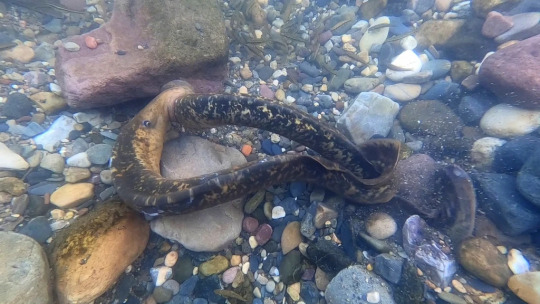
(Image: two lampreys mating. they are coiled onto each other with one using its mouth to suction onto the midsection of the other. They are on a rocky stream bed. End ID)
Lampreys are used in science for several purposes. They are often used as a model organism when attempting to understand the biology of early vertebrates and extinct agnathans. They are also studied quite a bit for their nervous systems. Lamprey brains are very simple and likely represent very early stages of brain development in vertebrates. In addition, they are useful for studies of the transmission of electrical impulses between nerve cells due to their axons (the part of a nerve cell that conducts electricity away from the main body and to other nerve cells), which are large enough for microinjectors to inject test substances into them. Lampreys are capable of fully recovering from having their spinal cords severed, something that is of great interest to surgeons and neurologists. Lampreys have been used as a food source in many cultures around the world. Some species have toxic mucus and blood, requiring them to be cleaned before eating. Historically lampreys have been kept in captivity for use in food as well as other purposes. There are records of people being executed or tortured by being thrown into a pit of carnivorous lampreys. In the wld, carnivorous lampreys generally don't attack humans unless they are starving. In addition, there is a record of one Roman statesman named Lucius Licinius Crassus being scolded for being more upset over the death of his pet lamprey than over the deaths of any of his wives. Unfortunately, the thing a lot of people know lampreys for today is the sea lamprey (Petromyzon marinus) being an invasive species in the great lakes of North America. They have no natural predators in the lakes and feed on a lot of ecologically and commercially important species. Due to their lack of predators, multiple methods are used to try to reduce their numbers and keep them from harming the ecosystem. These include using barriers to keep the adults from migrating upstream to breed, release of targeted poisons called lampricides, and releasing sterilized males into the lakes to mate with the females.

(Image: two sea lampreys suctioned onto a fish. The fish is green and covered with black dots. The two lampreys are suctioned next to each other on the top of the fish's head. Their bodies are dangling off of the fish in different directions. End ID)
#wet beast wednesday#lamprey#sea lamprey#agnatha#agnathan#jawless fish#fish#fishblr#marine biology#freshwater biology#ecology#zoology#animal facts#informative#image described
79 notes
·
View notes
Text
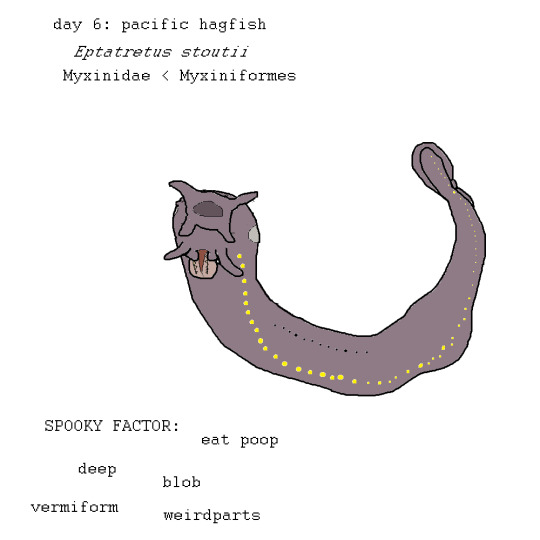
#eptatretus stoutii#eptatretus#hagfish#pacific hagfish#slime eel#agnathan#jawless fish#october#mspaint#myxinidae#myxiniformes
0 notes
Note
Top ten imaginary fishes?
I want there to be a freshwater swamp shark again like there was in prehistoric times, there were these long skinny eel shape ones and stuff, one like those
pelican eel but it isn't limited to the abyss, I wanna be able to see a pelican eel at the regular beach
a modern dunkleosteus species but only like 3 feet long, not big enough to kill people just big enough to completely bite hands off
a filter feeding coelecanth species the size of a whale shark
a freshwater agnathan I invented that's like a short fat googly eyed hagfish and bites like a cookie cutter shark, living in muddy rivers. I just want this to exist because they'd be horrible and everyone would dislike them but I'd keep one as a pet and love him.
Mudskipper but it's as big as an alligator and can eat a person
Dragon moray but it's 10 meters long
freshwater walking batfish and it's as big as a person
a flatfish (especially if it's like a tongue sole, they're the best kind) that does the mudskipper thing and crawls around on shore more than it swims.
a parasitic bloodsucking seahorse that will bite people. Just like my vampire butterfly idea, everyone thinks seahorses are just cute and nice so I want there to be one that's more of an ass hole
I feel that too many people are unreasonably scared of the water so I want to make it reasonable for everyone to be.
1K notes
·
View notes
Text
something i think a lot of people miss because its name is EELektross but the tynamo line is in very large part based on lampreys.
lampreys are incredibly basal (resembling the ancestral form, "primitive") vertebrates- agnathans (non-jawed) are a group of fishes that include the lampreys and the hagfish, which split off from the rest of the fish we know before moving jaws existed. they can give us a good idea of what some of the earliest vertebrates kind of looked like! they have one big sucker mouth, just like eelektrik and eelektross! (all photos via wikipedia unless otherwise mentioned)


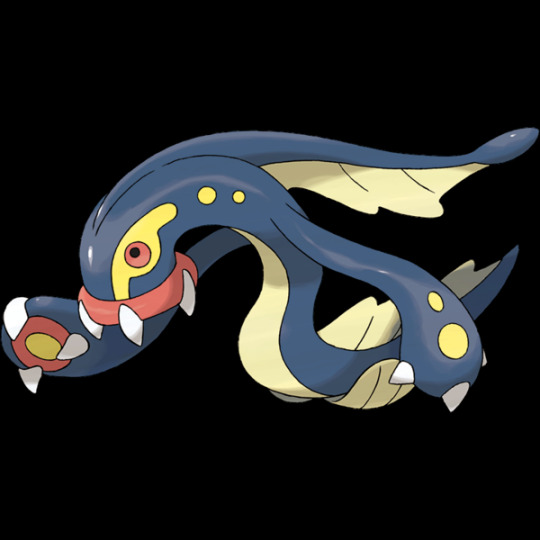
also very of note are the dots down the side of the head on both of these- they're lamprey gill slits! unlike the operculum of most bony fishes or the multiple tall gill slits of the cartilaginous fishes, lamprey gill slits are largely circular.
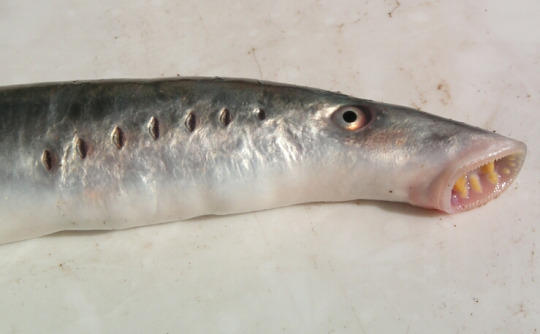
now, tynamo i'm a bit split on whether it more closely resembles eel larvae (leptocephalus) or lamprey larvae (ammocoetes).
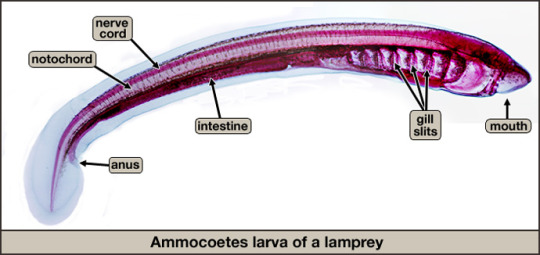
(photo via brian mccauley)

in case you didn't know, fish have larval stages! they're tiny and often weird and transparent looking. both ammoecoetes and leptocephali feed on tiny particles floating through the water (suspension feeding). i think with their white color and transparentish look, tynamo more resemble the leptocephali, but obviously with an ammocoete's jawless always-open mouth.

not relevant for our lamprey/eel discussion, but this is the larval form of the giant ocean sunfish, aka the mola mola. fucking look at it
also, a note! in addition to lampreys, the line obviously is a play on electric eels.
electric eels............are not eels.
eels are everything within the group anguilliformes. they're a big diverse group of mostly long and snake-looking fishes. this is an african conger, it's one of the prettiest eels in my opinion.

electric eels, despite the name, are indeed not eels. they're part of the gymnotiformes instead, the south american knife fish. all members of this group use electricty as a sense- they use weak electric fields kind of like an analogue to a bat's echolocation, to navigate and find food. only one genus within this group, Electrophorus, can actually shock stuff. the three species within that genus are the electric eels!
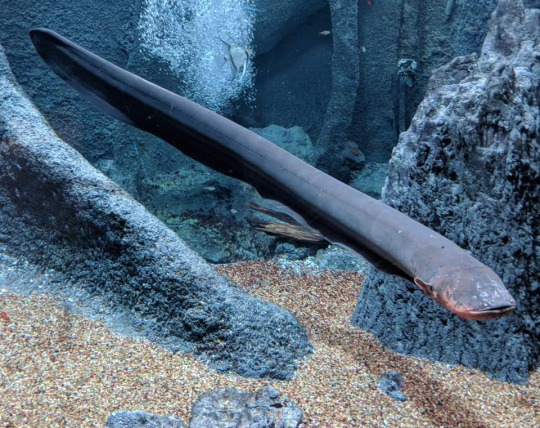
(photo via use ungulatenerd92 on zoochat)
they're funny looking guys. anyways, uh, pokemon or whatever
337 notes
·
View notes
Text

A fossilized agnathan head shield of an Ukrainaspis kozlowskii from the Dniester Formation in Nyrkov, Zalishchyky Raion, Ternopil Oblast, Ukraine. Like many similar osteostracans, this jawless fish was originally within the genus Cephalaspis. Osteostracans like Ukrainaspis are armored agnathans or jawless fish that are more closely related to lamprey and hagfish than to bony fish and chondrichthyans. These odd head shields may have been an adaptation against the rise of predatory jawed fish.
#fish#jawless fish#fossils#paleontology#palaeontology#paleo#palaeo#ukrainaspis#osteostraci#agnatha#devonian#paleozoic#prehistoric#science#paleoblr#ウクライナスピス#化石#古生物学
2 notes
·
View notes
Text
i love the merfolk with shark fish-halves, which to me implies that maren ancestors have always had a humanoid top half, but the fish half is less derived the further back in time you go. placoderm maren? AGNATHAN maren??? how far back does it go?
5 notes
·
View notes
Text
Addendum: I suck
I finished yesterday's Woodward Wednesday post in a hurry and made a couple of stupid errors I now need to correct here.
First of all, there is in fact not one but two illustrated pages of Silurian marine life that Alice B. Woodward made for Evolution in the Past, the other one being this one featuring at-least-sort-of fish (which I wrongly stated as only appearing in the Ordovician illustration)
There is actually much to be said of this page, so maybe it's best it be given its own post.

The vaguely sturgeonesque animals at the top are Lasanius, which has recently turned out to be a cyclostome, related to hagfishes and lampreys rather than "proper" fish. Hiding in the background are Lanarkia, and on the sea floor on the left looking oddly like a skate is Thelodus, both thelodont agnathans. In the foreground is Birkenia, an anaspid that isn't even as close to jawed fishes as the thelodonts.
There is also a Tremataspis swimming on the right, looking more like a generic osteotracan than this weird easter egg with a tail ought to (see Nobu Tamura's modern reconstruction below:)

H.R. Giger would tell you this is what a face hugger deposits down your throat, were he still alive.
There's another bulbous weirdo in the illustration: the bottom-dwelling betentacled onion-mimic that looks a bit like some kind of scotoplane. That is no sea cucumber, but a strange nautiloid called Gomphoceras. This thing is so obscure and odd I don't think even Joschua Knüppe has made a reconstruction of it yet. You hear that, Joschua? I'm calling you out!
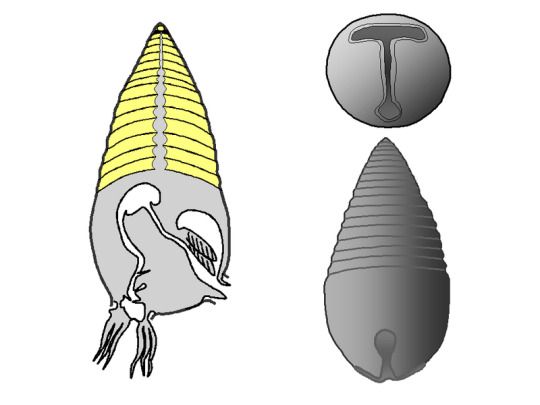
What if Nautilus, but a Mandalorian?
Finally there's that sort of vaguely horseshoe crab -like animal on the bottom, under Gomphoceras. What exactly is that? In the book it's listed as 'Hemiaspis', which is a genus of snake, so a clear case of a preoccupied name. The fossil appears to have been renamed Limuloides, and is now considered a planatergan, a sister group of horseshoe crabs that includes everything from spiders to sea scorpions.

They really aren't kidding when they say horseshoe crabs refuse to change, when their nearest relatives started out looking almost the same and are now spinning webs probably in the very room you are in right now.
#vintage paleoart#paleoartists#silurian#fish#nautiloid#horseshoe crab#jawless fish#errata#Woodward Wednesdays#Paleozoic
0 notes
Photo
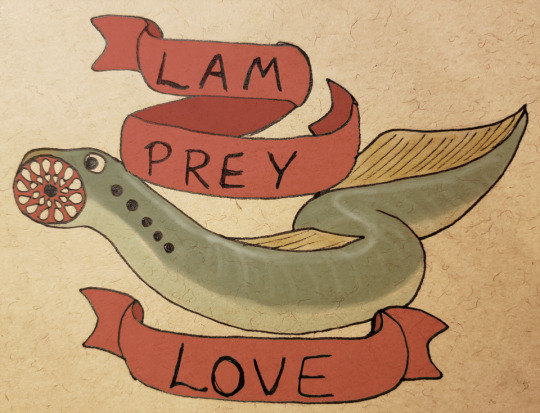
i had a thought tonight
goodbye eat, pray love
shoutout to all the agnathan aficionados on tumblr
#shadsart#lamprey#lampreys#agnatha#agnathan#fish#this came from me and my husband yelling about an unlit lamp in a bar we were in
2K notes
·
View notes
Photo
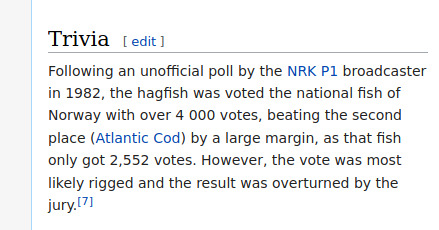
hey what listen you can’t just end this there
24 notes
·
View notes
Photo
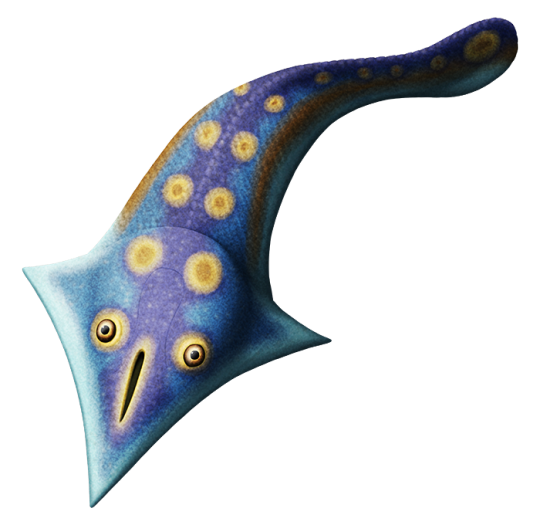
Although the only surviving agnathans in modern times are the lampreys and hagfish, back in the early-to-mid-Paleozoic these "jawless fish" were much more diverse. Many of them were heavily armored with large bony head shields – a feature eventually inherited by early jawed fish like the placoderms – which protected their heads, gills, and some of their internal organs.
And some of the oddest-looking of these armored agnathans was a lineage known as the galeaspids.
Known from southern China, Tibet, and Vietnam, these small fish were bottom-dwellers living in the shallow waters of lagoons and river deltas. Their most distinctive feature was a single large opening on the upper side of their head shields – and despite looking like a particularly goofy mouth this hole was actually a nostril, used for both a sense of smell and as a water intake for their gills. The actual mouth and the gill openings were on the underside of the head.
While early galeaspids had rounded head shields, later forms developed some more unusual shapes, with long spines sticking out to each side and pointed or spatula-shaped snouts.
Tridenaspis magnoculus here lived during the early Devonian in Southwest China, about 407-393 million years ago, and was only about 5cm long (2"). It wasn't the most extremely pointy of its kind, but still had a weird kite-shaped head shield, a long vertical slit-shaped nostril opening, and rather large upwards-facing eyes.
———
Nix Illustration | Tumblr | Pillowfort | Twitter | Patreon
#science illustration#paleontology#paleoart#palaeoblr#tridenaspis#galeaspida#cephalaspidomorphi#agnatha#jawless fish#vertebrate#art#that's not a mouth#😱
616 notes
·
View notes
Text
xxxdragonfucker69xxx replied to your link “The Aliens Beneath Us”
michelle.
fight me johgnathan
#xxxdragonfucker69xxx#an agnathan is a sort of fish idk where I was going with that but I feel clever
1 note
·
View note
Text
somewhat obsessed with the headcanon/fan theory that since Milotic has circular pores for gills (a trait exclusive to agnathans or “jawless fish” irl) it might actually be an unusually glamorous hagfish
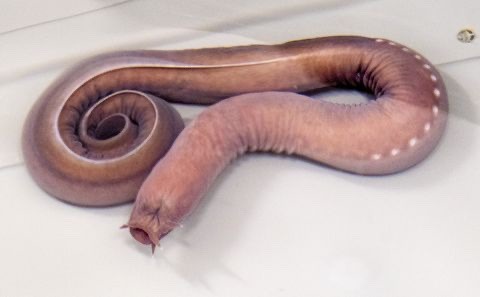
13 notes
·
View notes
Text
Around a dozen people in my notes lately weren’t entirely sure how a leech and a lamprey are different so I shall talk about my two favorite wet vampires, with “scary” images only under a cut!

LAMPREY:
A vertebrate like you and me!
Big googly eyes
Rows of small, round gill openings
Having gills, it’s one of the vertebrates we call a “fish” and it’s sometimes referred to as a “lamprey eel”
Technically not an eel or related to anything else on earth other than hagfish!
Together the lampreys and hagfish are the last remaining Agnathans, jawless cartilaginous animals older than sharks!
They are quite big, several feet in length at maturity!
No species of lamprey is known to deliberately bite humans; they are specialized in preying on other cold-blooded, gilled aquatic vertebrates, like all those newfangled fish with jaws.
Not all species actually feed as adults, though.
Young lamprey are blind, transparent filter feeders that live buried in sediment!
Despite no direct relation, many species migrate from ocean to freshwater river to spawn, exactly like almost all true eels.
Good parents. Will use their suckers to build a nest out of stones and protect the eggs!
Messy and grisly vampires. Again nothing to worry about if you aren’t a fish, but those that still feed in their mature form rasp a large wound in the victim to vacuum up blood and even tissue. This is frequently deadly to smaller river fish such as immature bass and trout.

LEECH:
Annelids closely related to earthworms!
A sucker at the head end houses the mouth. On the tail end is a second sucker to help grip surfaces or “walk” like an inchworm.
Usually have a bunch of tiny speck eyes around the head, but some have eyes down the body and on the rear end too!
Most are amphibious to some degree and some live their whole lives on land in moist environments.
Only some species drink blood. Most leeches are predators of snails, worms and aquatic insects.
ALSO good parents! Some leeches leave a cocoon full of babies with its own food supply inside, like a yolk, others carry their young on their underside until they’re big enough to fend for themselves.
Careful and polite vampires. Those that drink blood create only a tiny little pinhole with their bite, using a powerful anticoagulant so blood flows freely from the surgically delicate wound. Once full, they detach and drop off on their own.
MOUTH COMPARISON: (MAY DISTURB SOME PEOPLE???)
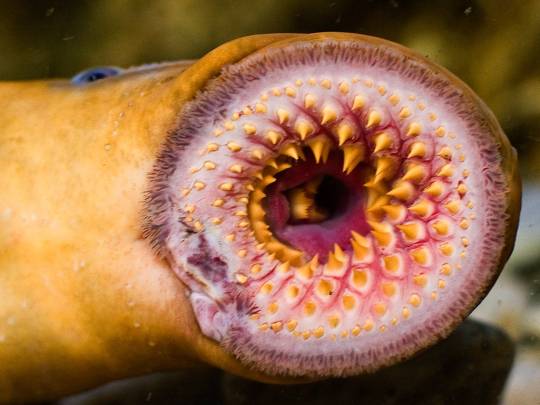
LAMPREYS have the big, gaping circular mouth full of frightening looking teeth, borrowed by countless pop-culture monsters and, incorrectly, most pop-culture leeches.

“JAWED LEECHES,” which include most of those that will suck your blood, have a mouth so tiny it’s often not even visible, but it is surrounded with three very tiny jaws in a triangular arrangement, each covered in microscopic teeth.
There does however also exist a large group of “proboscis leeches,” which drill into the host with a needle-thin, barbed “tongue.” Very few of these feed on mammals like us! Yet another group of leeches are both jawless and tongueless; they actually swallow whole prey like a snake.
2K notes
·
View notes
Text
Animal Crossing Fish - Explained #100
Brought to you by a marine biologist who has written 100 of these holy crap.
CLICK HERE FOR THE AC FISH EXPLAINED MASTERPOST!!!
Here we are at 100 and I’m celebrating by covering my favorite fossil, as well as the last fossil fish (we have two more aquatic fossils left) - Dunkleosteus. The Dunk is a favorite among fish enthusiasts, at least from my experience. It represents the very best of the Placoderms, an ancient lineage of fish that introduced and exemplified many of the evolutionary milestones vertebrates like us still take for granted. Nevertheless, they didn’t exist on Earth for long, but they were hella cool.
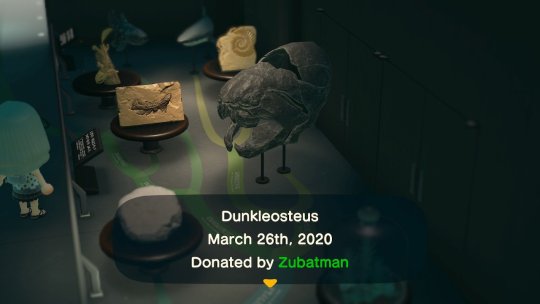
As big as the fossil appears, it is just one fossil piece in ACNH, so if you haven’t found it yet, guess you’ll have to just keep digging everyday until you do. (Also, “Zubatman” is my husband’s username in the game, in case you were confused lol)
Like I said above, Dunkleosteus belonged to a class of fish called the Placoderms (Placodermi), an ancient lineage of fish that has no relatives alive today. They appeared and then went extinct all WAY before the dinosaurs ever set foot on Earth, their hayday being during the Devonian Period, ending some 359 million years ago. The class name means “plated skin” and that’s really the first feature you would notice about these fish. About half of their bodies were covered in bony plate armor, and most species were bottom dwellers that could have really used the help. Predators, such as sharks, were already prowling the seas at this time. However, Placoderms weren’t just here to be prey; they also evolved into some of the most massive predators of the Devonian.
Of the ten species of Dunkleosteus we know of (since that’s the genus name), the largest was the type species for the genus, Dunkleosteus terrelli, which grew to be about 20 feet (about 6.1m) in length, we think. I’m pretty sure this is the species the fossil is meant to represent, since D. terrelli was widespread and is the most well-known of the Placoderms in general.

^Here’s what the fossil looks like irl. (Ghedoghedo, CC BY-SA 3.0 <https://creativecommons.org/licenses/by-sa/3.0>, via Wikimedia Commons)

^And here’s a common reconstruction of what it may have looked like in life. This is a toy of a D. terrelli! where were these toys when I was a kid???
I say this is a “common” reconstruction of Dunkleosteus terrelli because we actually don’t know what the second half of the fish looked like. We can do our best to reimagine it based on the rare, well-preserved fossils of its relatives, but the truth is, we don’t know for sure. Like sharks, Placoderms had skeletons made of cartilage (the flexible material that makes your ears and nose). Cartilage doesn’t preserve as well as bone, and so, all we have of this animal are its plates that did preserve better to become fossils.
Like I said above, Placoderms exemplified and even introduced some evolutionary milestones. For one, Placoderms were among the first classes of Vertebrates to have jaws and really use them well. Before sharks and placoderms, Vertebrates were jawless. Jaws were an extremely important adaptation for Vertebrates, and you can tell because we all have them now (except for the Agnathans, the hagfish and lampreys). Jaws allowed Vertebrates to manipulate food better, break it down, and especially help predators catch their food. In that vein, Dunkleosteus terrelli, being the largest predator of its time, was probably the first super-predator in the world’s oceans, eating other predators as part of its natural diet. With teeth like scissor blades that are believed to have self-sharpened themselves every time the animal opened and closed its mouth, The Dunk was truly a sea monster.
Not only that, but Placoderms are also recognized as the first vertebrates to have live birth, in which the male and female copulate internally and then the female keeps the eggs inside her to incubate and then birth babies live and ready to go. The discovery of a Placoderm fish fossil showing a female that died in the process of live birth pushed live birth in vertebrates back some 200 million years.
Unfortunately, like all good things, the Placoderms didn’t last. They went extinct at the end of the Devonian, with only a single group lasting into the first part of the Carboniferous period before becoming extinct as well. Today, there are no surviving Placoderms. It’s believed their heavy armor is what ultimately did them in, becoming outcompeted by the armor-less, but much more agile sharks and bony fish.
And there you have it. Fascinating stuff, no?
#placoderms#dunkleosteus#fossil#fish#acnh#animal crossing#animal crossing new horizons#science in video games#animal crossing fish explained
10 notes
·
View notes
Photo

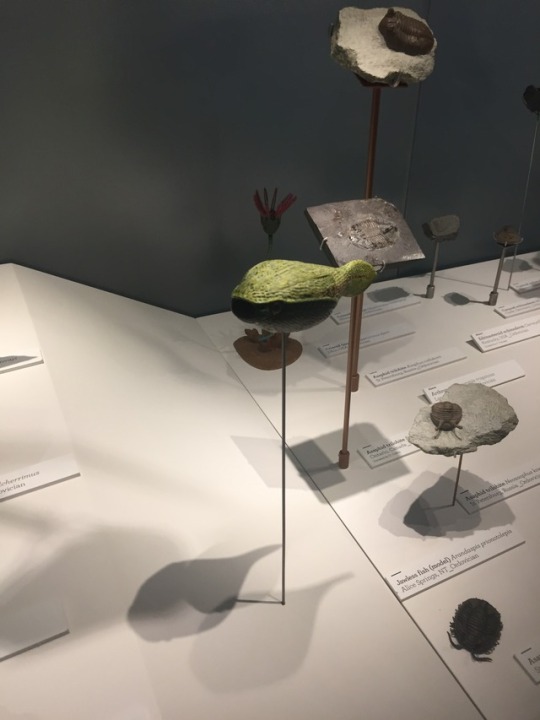
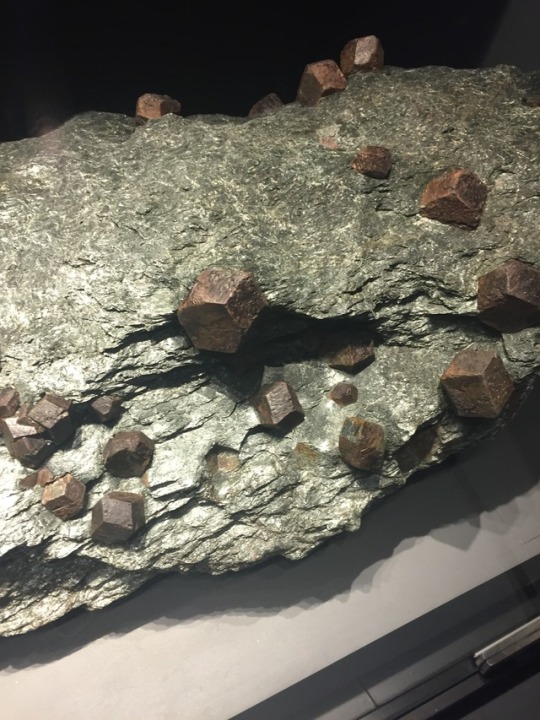
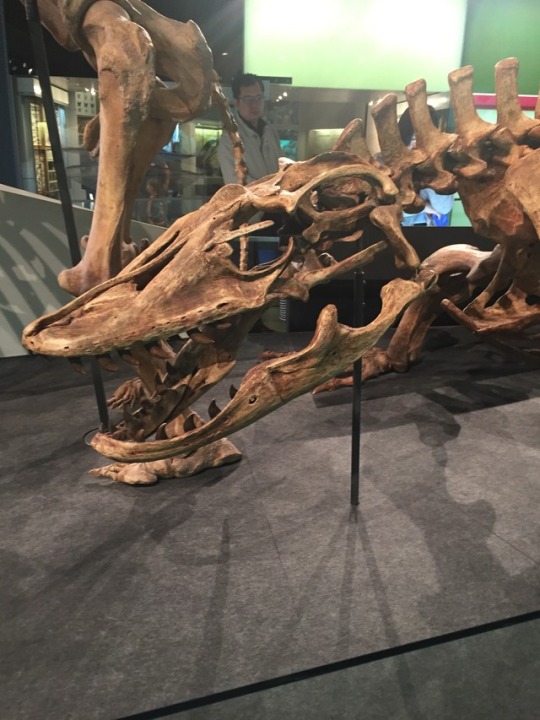


Part 2 of my adventure today at the Melbourne Museum with @captain-amaezing!
1. The massive wingspan of the pterosaur Quetzalcoatlus.
2. Model of the primitive fish Arandaspis. Arandaspis was found near Uluru!
3. Schist with the biggest garnets I have ever seen.
4. Megalania, the largest squamate to ever walk the Earth. Basically a Komodo dragon on steroids. Some people still believe that Megalania still roams the Aussie outback???
5. The two-ton wombat Diprotodon. They were probably quite tasty to the Aboriginal people : (
6. Awesome mount of Amargasaurus! Amargasaurus is a sauropod with a set of neck spines; sauropod paleontologists debate whether the spines stood alone, or were connected by a sail (like Dimetrodon). It’s unclear what the spines/sail would have been used for.
(Part 1) (Part 2)
#Maru's adventures down unda#Melbourne Museum#Pterosauria#Agnathan fishes#metamorphic rocks#geology#Squamata#Sauropoda#Diprotodontia#Maruchelys OP#photo
3 notes
·
View notes